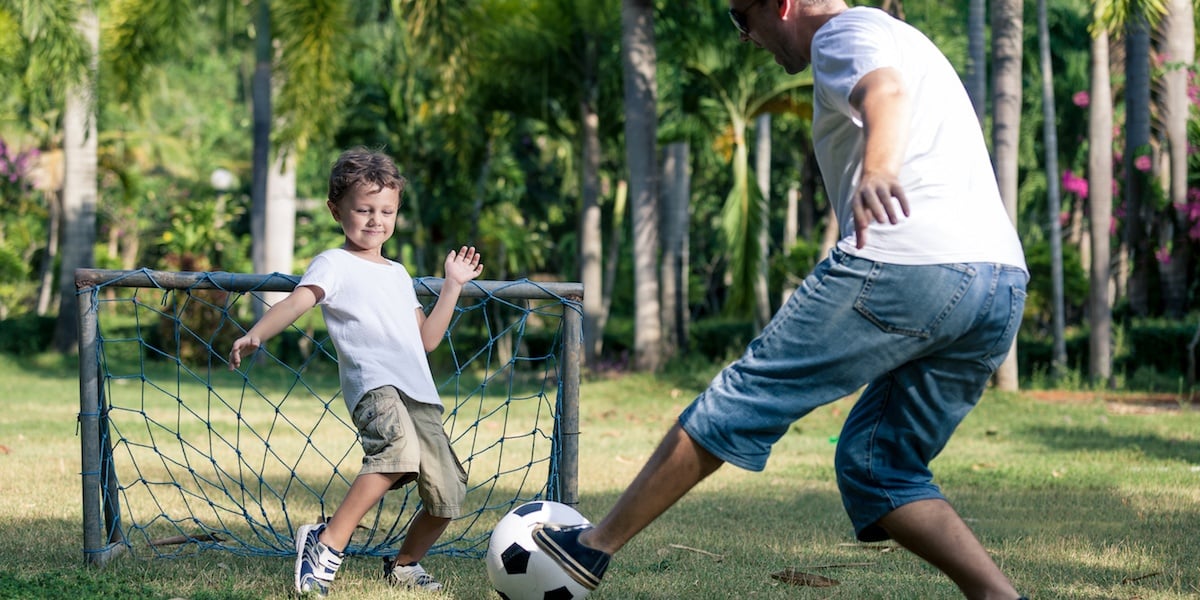10 football training drills to improve your Childs' skills at home
It was Sir Bobby Robson, legendary English football manager and player that said “Practice makes permanent”. This is something that has stayed with me throughout my sporting, academic and working life.
Often during my coaching sessions players will see me or one of the other members of the coaching team perform a skill with the ball. They come over and as kids do ask questions about how to replicate the skill or how we were able to get so good at it. I off course break the skill down for the players and explain the fine details but I always explain that ultimately to become proficient at performing skills with the ball ‘practice makes perfect’.
Research indicates that a child has to perform a skill at least 75 times before they actually begin to learn it. Mastery of the skill comes much later. This is why children getting multiple touches of the ball is so important and brings me back to my point of practice makes perfect.

In terms of the player’s holistic development in the game, group coaching sessions are a key factor in players learning and growth. However, as I always explain to my players, it is not enough to come to one or two coaching sessions a week and expect to be an accomplished and well-rounded player. To take that next step players must dedicate part of their spare time outside the coaching setting to honing their skills. Whether that be in the park with their friends, with Dad in the back garden or annoying Mum by kicking the ball against the living room door. Any of the aforementioned activities would go some way to developing the player's footballing ability. However, I ask myself as a coach and a player four key questions regarding this matter.
- The first is specificity? Does the practice hold significance and relevance for the player?
- The second is time? Although I am biased, I do understand that children and young people do have other interests and commitments outside Soccer. Therefore, it is important to use the time given to the game outside coach and match setting is used wisely.
- The third is enjoyment? “I don't believe skill was, or ever will be, the result of coaches. It is a result of a love affair between the child and the ball”. This point made by Roy Keane (one of my footballing heroes) touches on a key point. An important factor to consider is a person’s motivation to play the game of football. The love affair which Roy Keane talks about is something intrinsic, the passion of why a player wants to kick a ball around and why that brings them so much joy. Therefore, I believe this must be incorporated into what players is doing outside a coaching and match setting.
- The fourth is accessibility? What facilities and or equipment do the players have available to them.
Taking all of these factors into account I wanted to devise a challenge for my players that would target their ball mastery, competence and confidence with the ball at their feet. Which in turn players could easily commit a short space of time to a few times a week outside of coaching sessions to challenge themselves and teammates too…
The answer was…. The 10-2-1 Challenge.
The concept for 10-2-1 is simple; 10 skills, 2x2 meter square and 1 minute to perform each skill.
The aim of the challenge is to perform each given skill as many times as possible with correct technique and keeping the ball within the 2x2 meter square. Players can then record their score for each of the skills and begin on trying to improve their scores and compare it with teammates for a bit of healthy competition.
Check out our demonstration video below:
The skills:
- Fast Feet
- Place the ball in between your feet, with your legs shoulder width apart
- Slightly bend your knees
- Knock the ball in between your feet as quickly as you can, using the instep
- Triangles
- Start with the ball slightly in front of you
- Drag the ball back with the sole of your right foot at an angle so your legs are shoulder width apart
- Pass the ball across to your left foot using the instep of your right
- Pass the ball forward at an angle with your left foot
- Stop it with the sole of your right foot and continue the process
- Do the same exercise but now start with your left foot
- Drag-Push
- Ball Starts in front of you, drag the ball back using the sole of your foot
- Then push the ball forward at a slight angle using your laces
- Stop the ball with the sole of your other foot and quickly pull the ball back
- Push it forward again at slight angle and continue process.
- Inside-Outside
- Start with the ball slightly in front of you
- Play the ball side-wards with the instep of one foot
- With the other foot play the ball in the same direction with the outside of the foot
- Then use the inside of the same foot to pass the ball back in the opposite direction
- With the other foot play the ball in the same direction with the outside of the foot
- Use the inside of the same foot and continue the exercise
- Fast Feet (Step Over)
- Knock the ball in between your feet as quickly as you can, using the instep
- Once the ball has hit the inside of your right and then left foot perform a step-over with you right foot as the ball is moving
- Once your foot reaches the outside of the ball again perform and fast feet repeat the step over with the left foot.
- Find a rhythm and make sure you are on the balls of your feet.
- Double Taps
- This is a combination of fast Feet and Toe Taps
- Once again find a rhythm, it is easier if you say the process to yourself, side to side, top, top
- So knock the ball from one foot to the other using the insteps
- Then follow that by touching the top of the ball with two toe taps
- Continue the exercise
- Body Triangles
- Start with the ball out in front of you
- Drag it back with the sole of your foot till it goes all the way past your standing foot
- Then with the instep pass it around the back of your standing foot
- Your standing foot will then stop the ball and push it forward with the sole of your foot to the start position. Rotate which way the ball moves around.
- Squeeze & Push
- Have the ball underneath your body
- Place the sole of your foot on top of the ball
- Roll it to the side so it opens your legs and push it back with the inside almost keeping your foot in contact with it the whole time
- The continue the exercise using the other foot
- Drag Stop
- Start with the ball on the inside of your right foot.
- Drag the sole of your right foot over the top of the ball.
- Allow the ball to run across your body and then stop the ball with the inside of your left foot.
- Repeat the action now with the left foot.
- Juggles
- Ball has to be kept up using the feet and legs without bouncing and not moving outside the square.
To make it easy to keep track of the progress we have put together this easy scorecard which can be downloaded and printed for easy scoring.


